Introduction
This guide will show you how to replace an air conditioner actuator on a VE Commodore. These actuators commonly fail on Series 1 vehicles and have been seen to fail on Series 2, however a revised unit is now being used.
There are multiple actuators behind the dashboard controlling modes, temperatures and air sources. Our guide will show you how to identify the faulty actuator and the steps to replace it.
HVAC = Heating, Ventilation and Air Conditioning
Common symptoms
- Vents stuck in a certain mode such as feet, face or demister.
- Loud clicking noise behind the dashboard when changing modes or temperature
- Heating / Cooling not working properly. Often permanently on heat or cold.
Difficulty Rating
Tools/Parts Required
- Trim Removal Tools
- Screwdrivers
- Replacement Air Conditioner Actuator – Sold by AutoInstruct
Guide
How To Identify The Faulty Actuator
Multiple actuators can be found on both the left and right sides of the dashboard. The same actuator units are used regardless of its purpose. Let’s go through some troubleshooting steps below:
- Attempt a HVAC System Relearn
- It’s possible that your actuators are not actually faulty but have ‘forgotten’ which position they are in. The relearn process runs all actuators for 10-15 seconds, allowing them to calibrate their positions.
- To do this first close your doors and turn the radio off. You’ll need to listen to the motors and they’re very quiet.
- Turn the Ignition to ‘on’ but do not start the car. Press and hold the rear demister button until you hear the actuators moving. After 10-15 seconds the actuators will stop and the system will be calibrated. Test the air conditioner system and check if your problem still exists. Be sure to cycle through each mode and heat / cool.
- If the problem still exists or you heard loud clicking noises during this process, it is very likely that an actuator is faulty. Proceed to the next step.
- Identifying the Faulty Actuator
- If you heard loud clicking noises during the relearn process this will help with identification. Run the relearn again and listen for the clicking. Is it on the passenger or drivers side? Listen around the footwell area on both sides and you should be able to determine where it was louder. We now need to access that actuator.
- If no clicking was heard and you still suspect the actuator is at fault, visual identification may be required to see if the motor and HVAC arms are moving when the relearn is in progress. This will involve trim removal from the drivers and/or passenger side of the vehicle. We’ll run through this process below.
- Note: There is an electrical interlock between the AIR RECIRC function and the HOT/COLD mixing function. If the system detects a malfunction in the AIR RECIRC, the HOT/COLD mixing actuator is disabled. This fault is indicated by the LED on the RECIRC button blinking.When you run “relearn, if the HOT/COLD actuator is not moving, this does not necessarily indicate that the actuator has failed. It might be that the RECIRC system has failed, and the interlock has disabled the HOT/COLD mixing actuator. Confirmation of the fault is indicated by the blinking LED on the RECIRC button.
- It is possible to have multiple actuators fail! Keep this in mind when performing your assessment.
Step 1
System Overview
There are 4 HVAC actuators in the system, each one is identical
- Air Recirculation Door Actuator – Located above the blower fan and controls the recirculation function.
- Floor Vents – Upper left side of centre console (Passenger Side)
- Heat/Cool – Lower left side of centre console. Uses interconnecting levers to control the butterfly valve inside the heater box
- Face Vents – Upper right side of centre console (Drivers Side)
Step 2
Drivers Side Actuator
The drivers side actuator which controls the air directions between feet, face, demister is usually the faulty unit. It is often identified as the air conditioner being ‘stuck’ on feet or demister modes. The process below outlines the actuator replacement procedure.
Using a trim removal tool, pop off the side trim piece. There are three clips, one on each corner.
Step 3
- Wedge your fingers behind the lower section of the trim and firmly pull upwards as shown by the red arrows.
- With the bottom clips released use a gentle hinging and pulling motion to release the top clips on both sides of the steering wheel. Pull away as shown by the orange arrows.
- Be careful releasing the clips as the trim will drop downwards. It is quiet heavy.
Step 7
You’ll now need to locate the actuator. Look up beside the headunit and high in the dashboard your will see the actuator as pictured.
To verify the actuator is faulty, run the relearn process as described previously. If you feel or hear the actuator clicking, or the HVAC arms are not moving, the actuator is probably at fault and will need to be replaced.
Step 8
Replacing the actuator is a very difficult process due to the location in the vehicle. There are two screws (Red circles) holding the actuator in place, and one alignment pin (Green circle) to ensure the actuator is in the correct position. There is also a green wiring plug you will need to disconnect.
The bottom screw is relatively easy to access with a small stubby screwdriver or a ratcheting screwdriver set.
The top screw is extremely difficult to remove as there is limited space to operate. You may find yourself lying upside down in the footwell and painstakingly turning the screw millimetre by millimetre.
Once both screws are removed the motor will simply pull off from the HVAC arm. The HVAC arm may fall off, so take note of its orientation and position to simplify reinstallation.
Step 9
The replacement actuator (Which you can purchase directly through us at AutoInstruct – We’d appreciate the support!) can now be installed into the vehicle.
Firstly reinstall any HVAC arms that may have fallen loose, then slide the arm onto the actuator – It can be in any position. Next place the actuator onto the alignment pin and begin to install the lower screw.
Commence installation of the upper screw, checking alignment and position of the actuator and HVAC arms.
Once both screws are tightened, connect the wiring harness and perform a HVAC relearn. You should now see the actuator moving smoothly without any clicking noises. When the relearn is complete, test operation between feet, face and demister. Keep in mind we have removed the ducting on the drivers feet!
Step 16
Remove the faulty actuator by unplugging the electrical connector, unscrewing the two screws and pulling the drive gear off the HVAC arm. This actuator is much easier to access compared to the drivers side.
Replace the actuator with a new unit. Screw into place and reconnect the wiring loom.
Once both screws are tightened, connect the wiring harness and perform a HVAC relearn. You should now see the actuator moving smoothly without any clicking noises. When the relearn is complete, test operation between feet, face and demister. Keep in mind we have removed the ducting on the passengers feet!
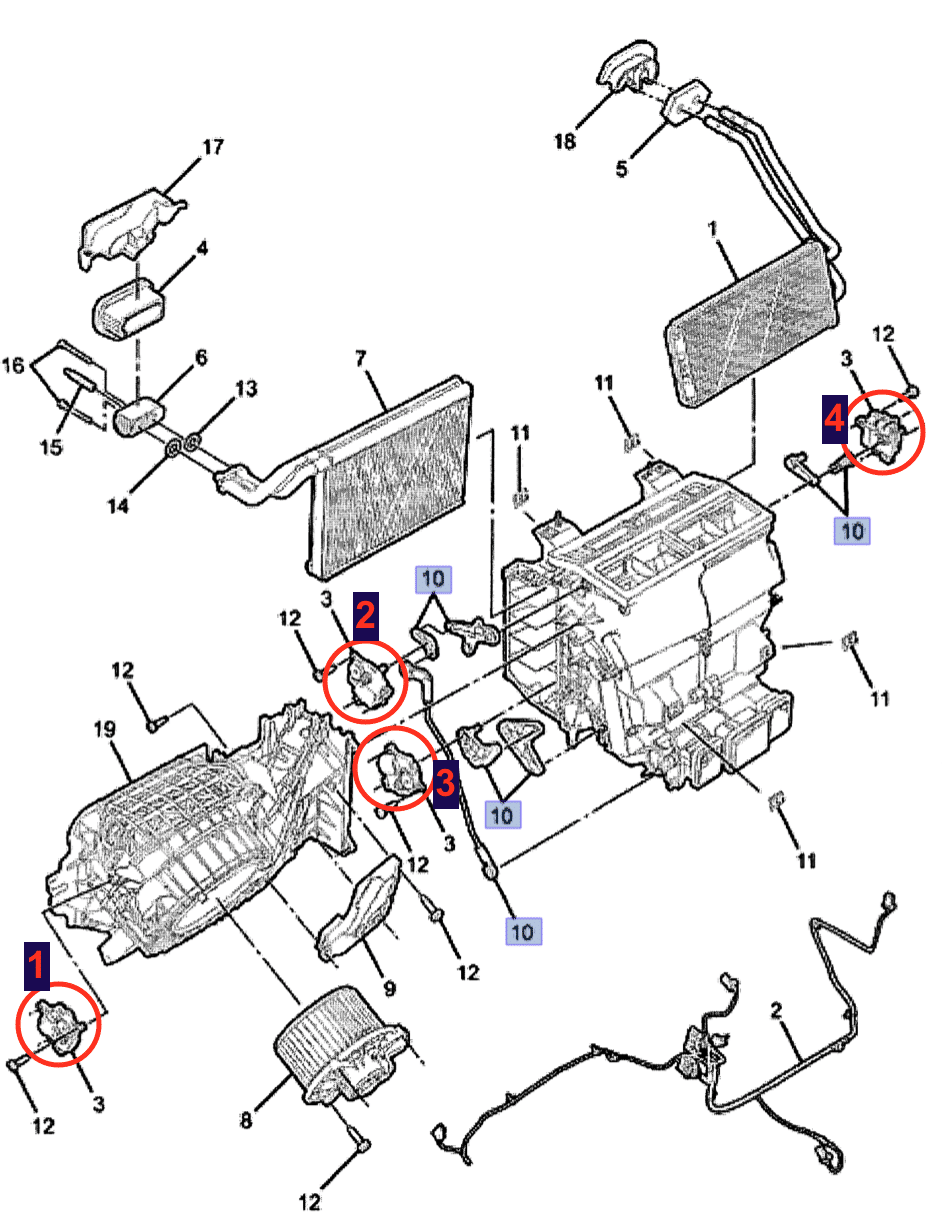
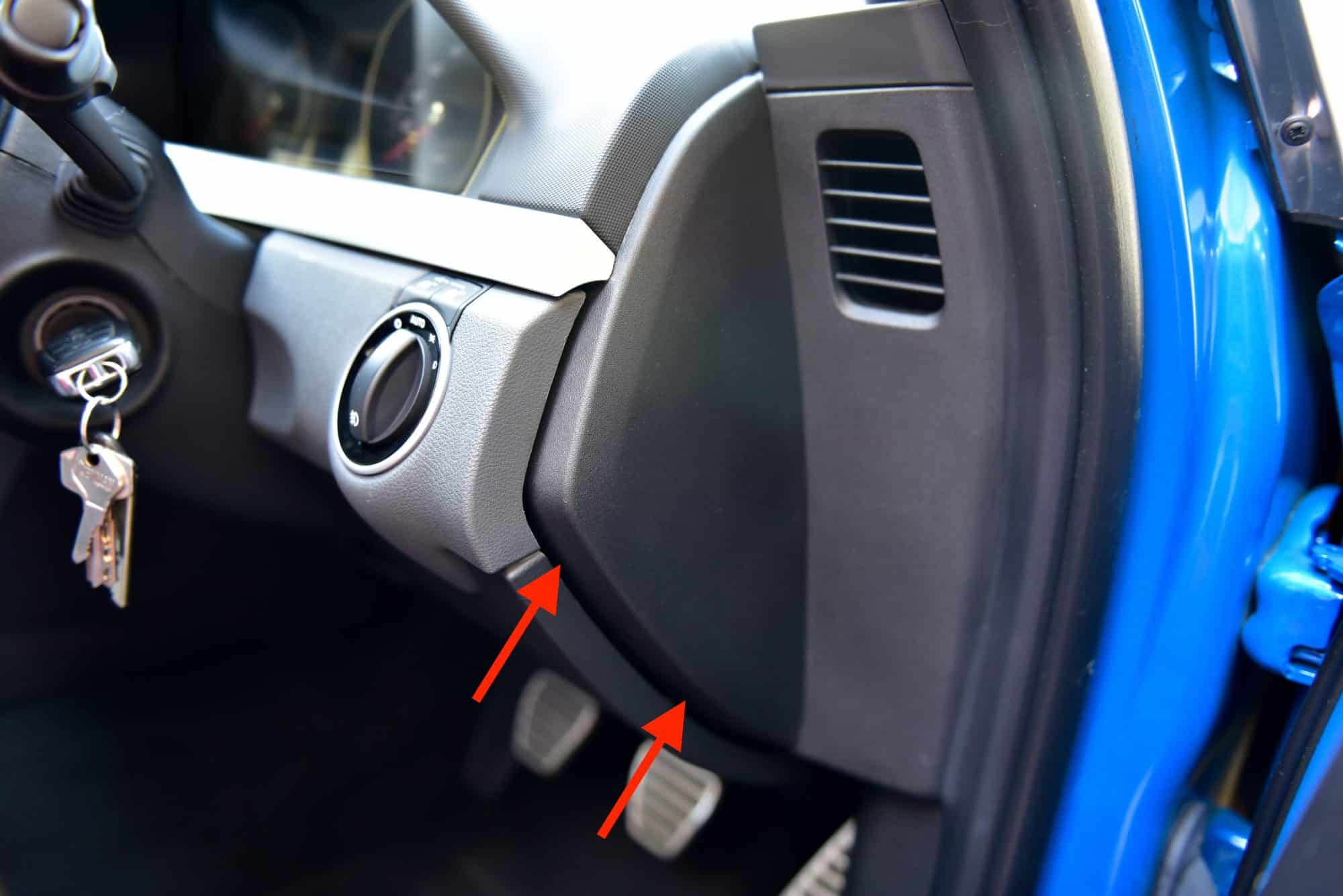
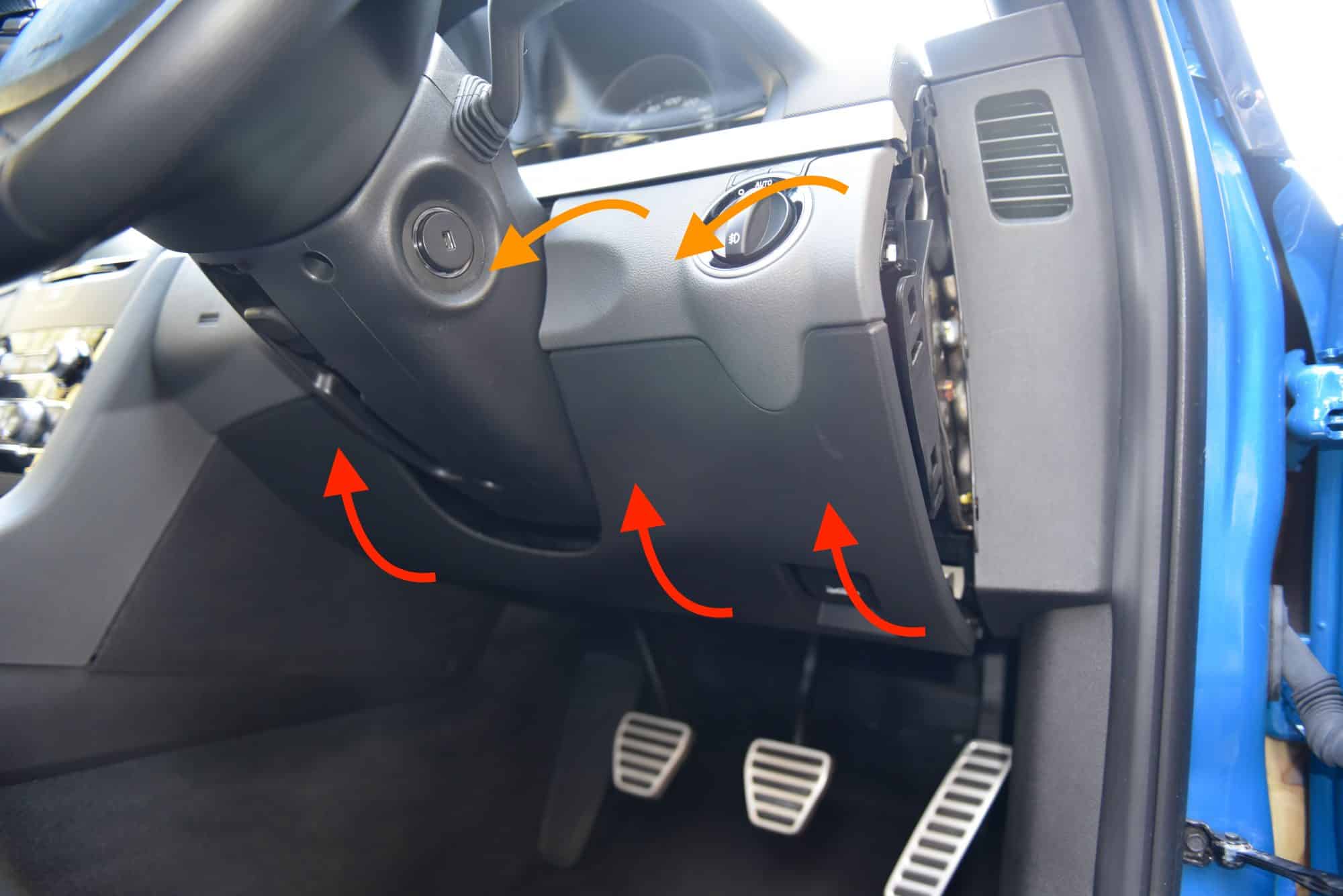
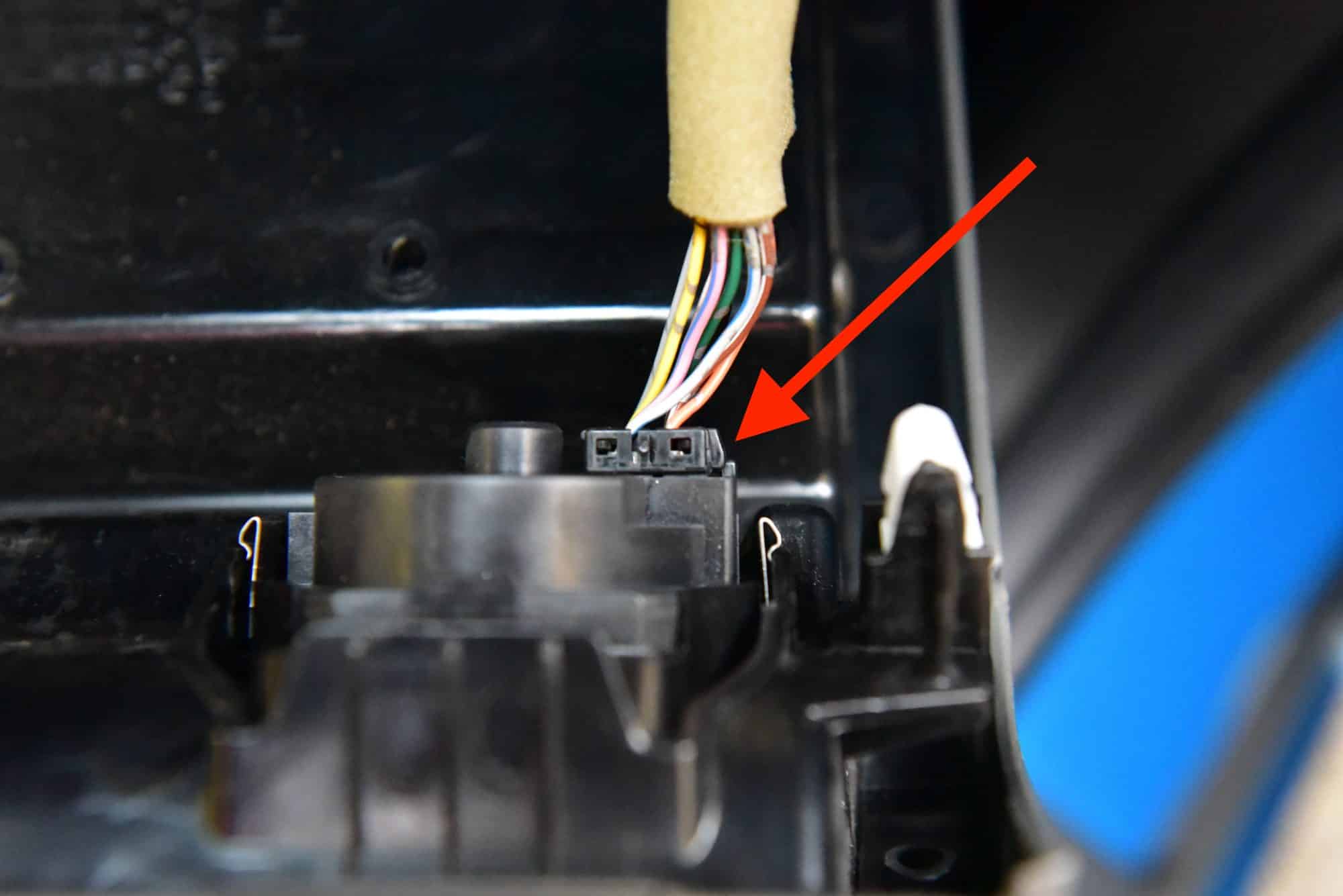
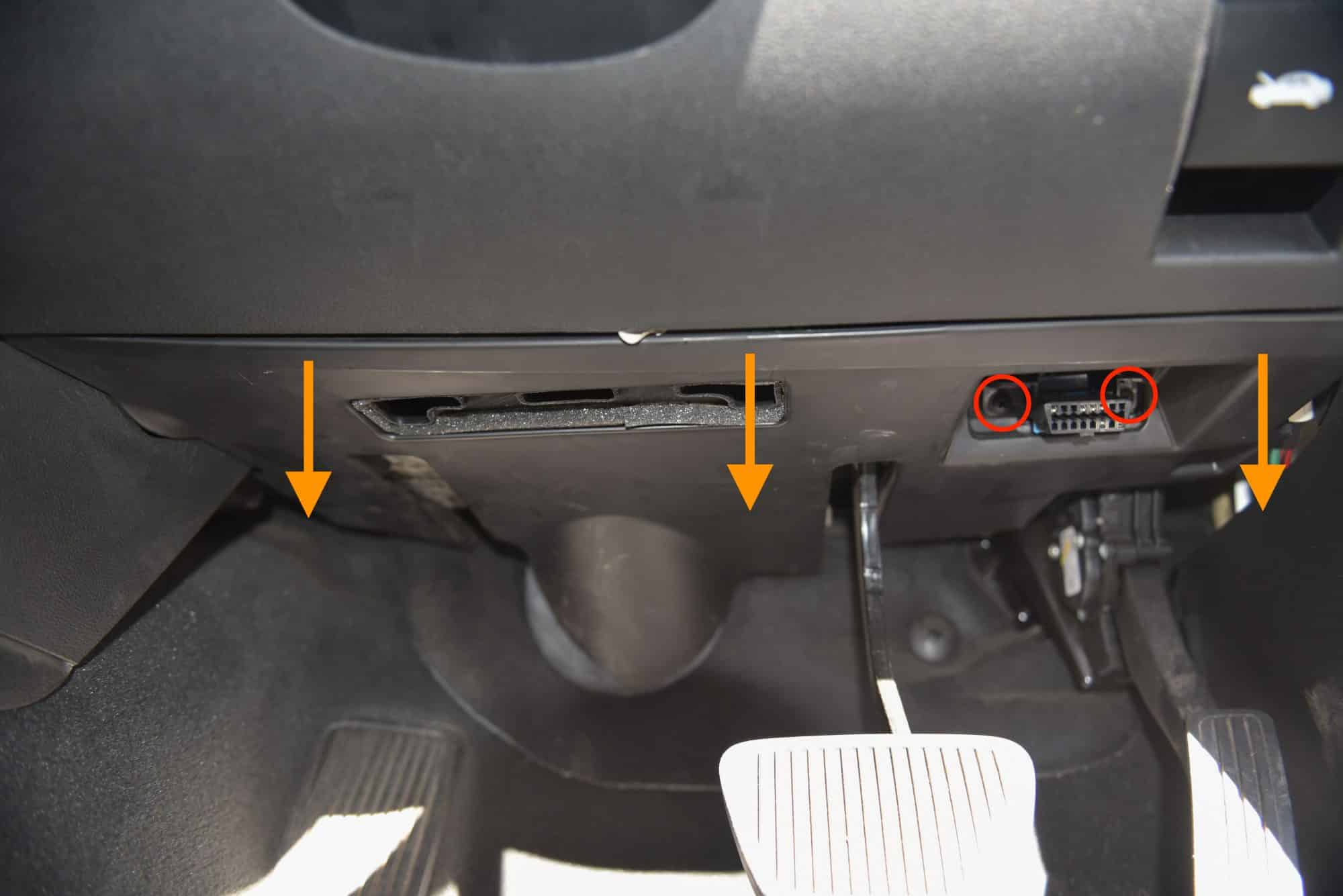


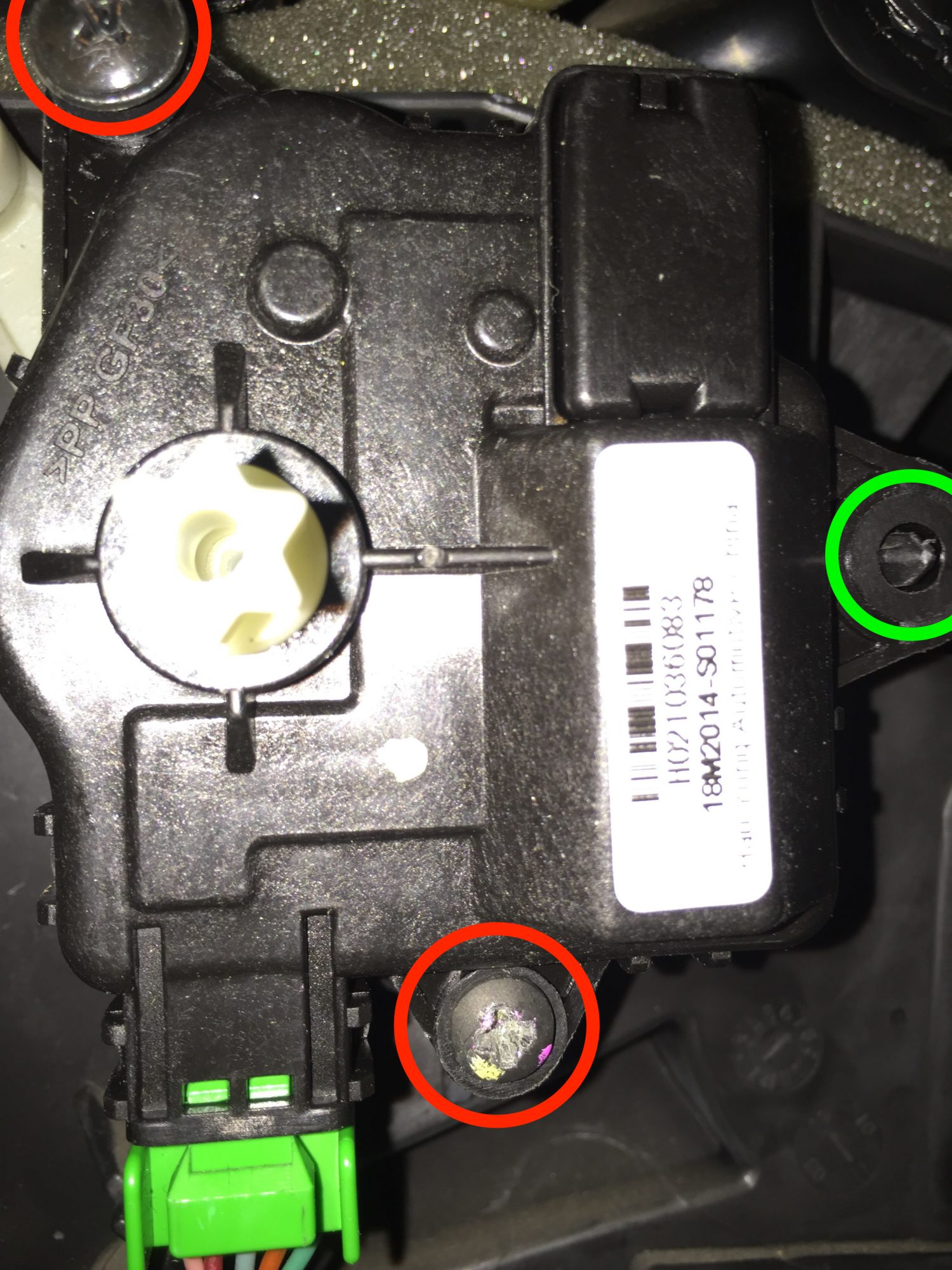
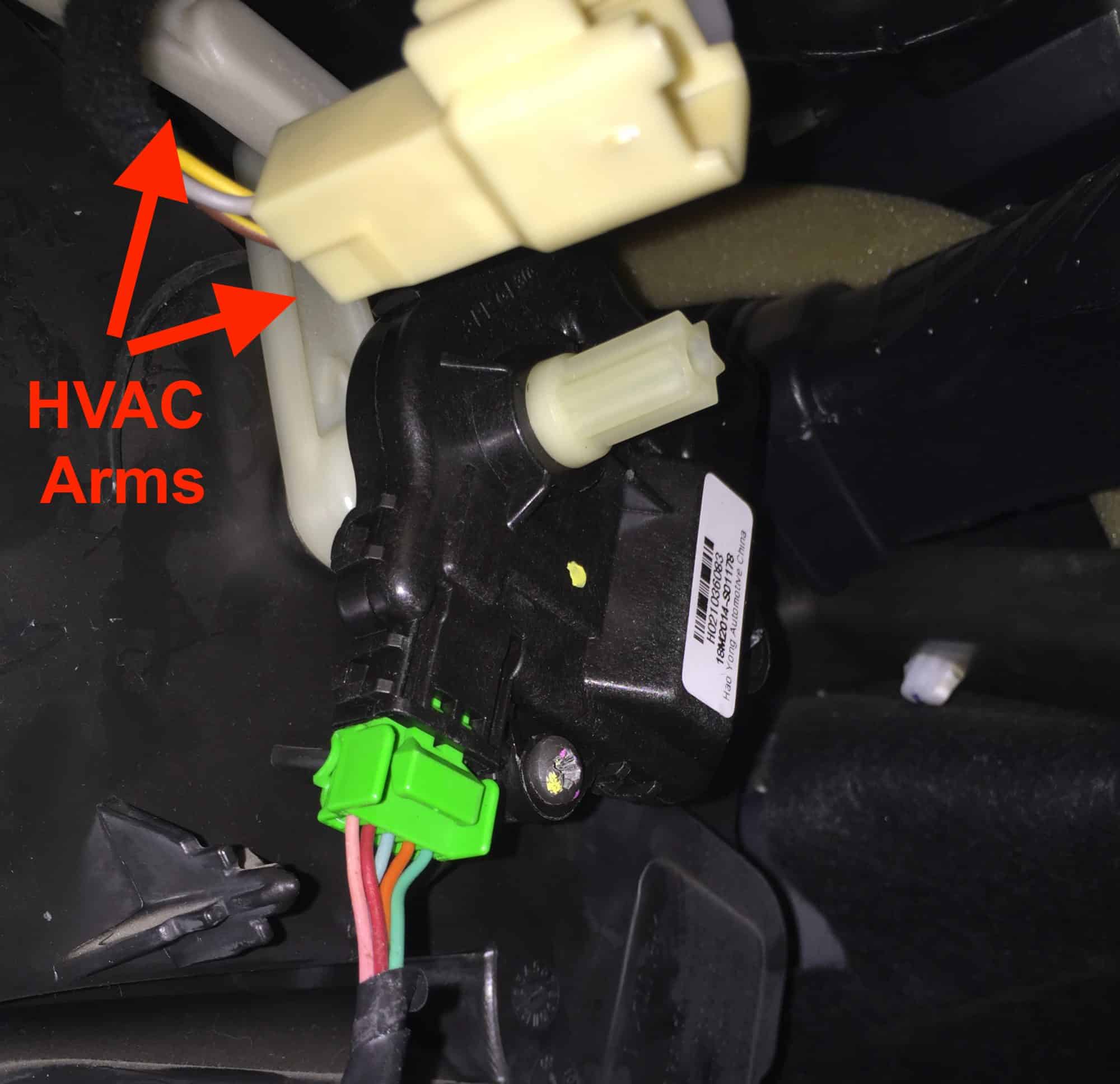
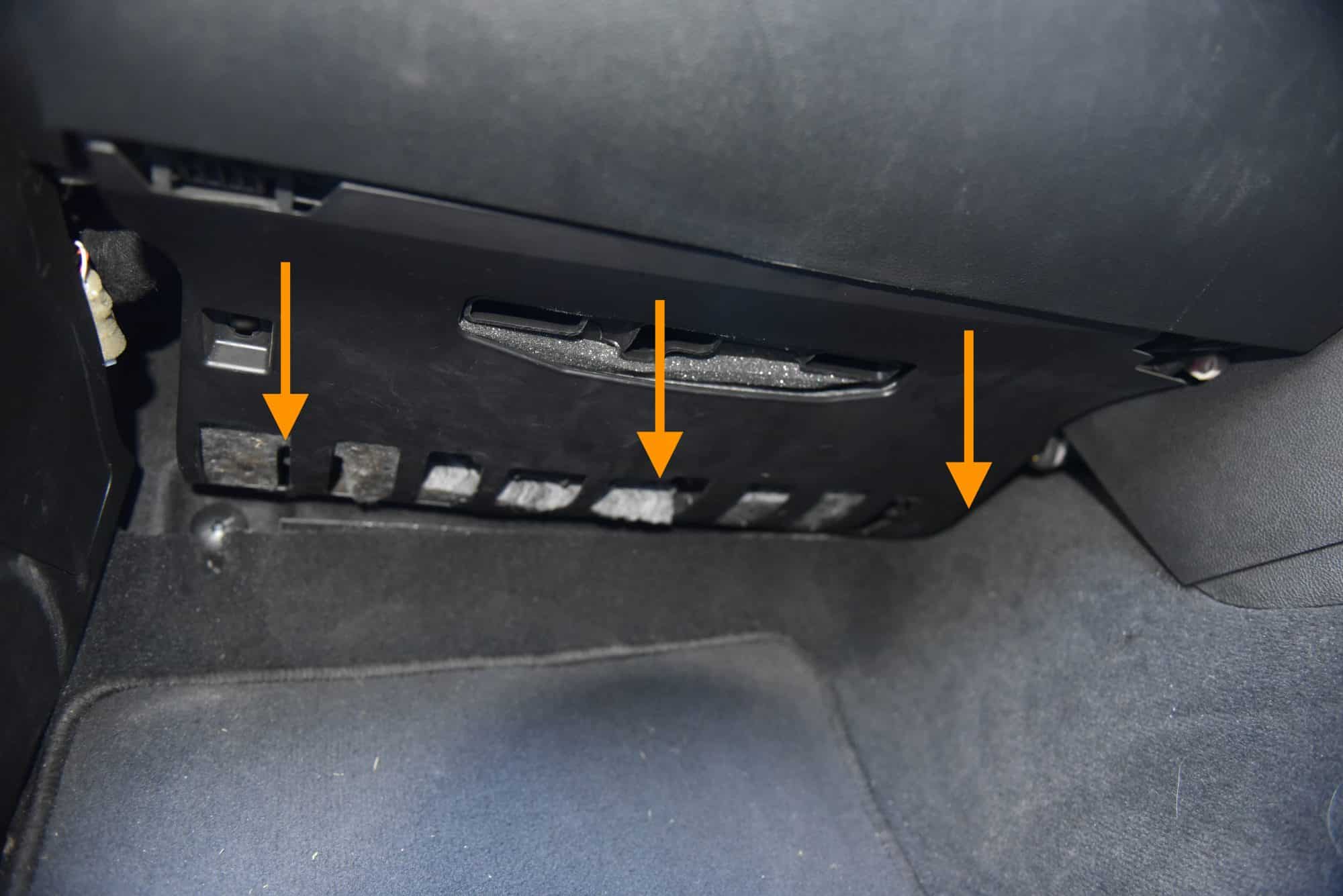
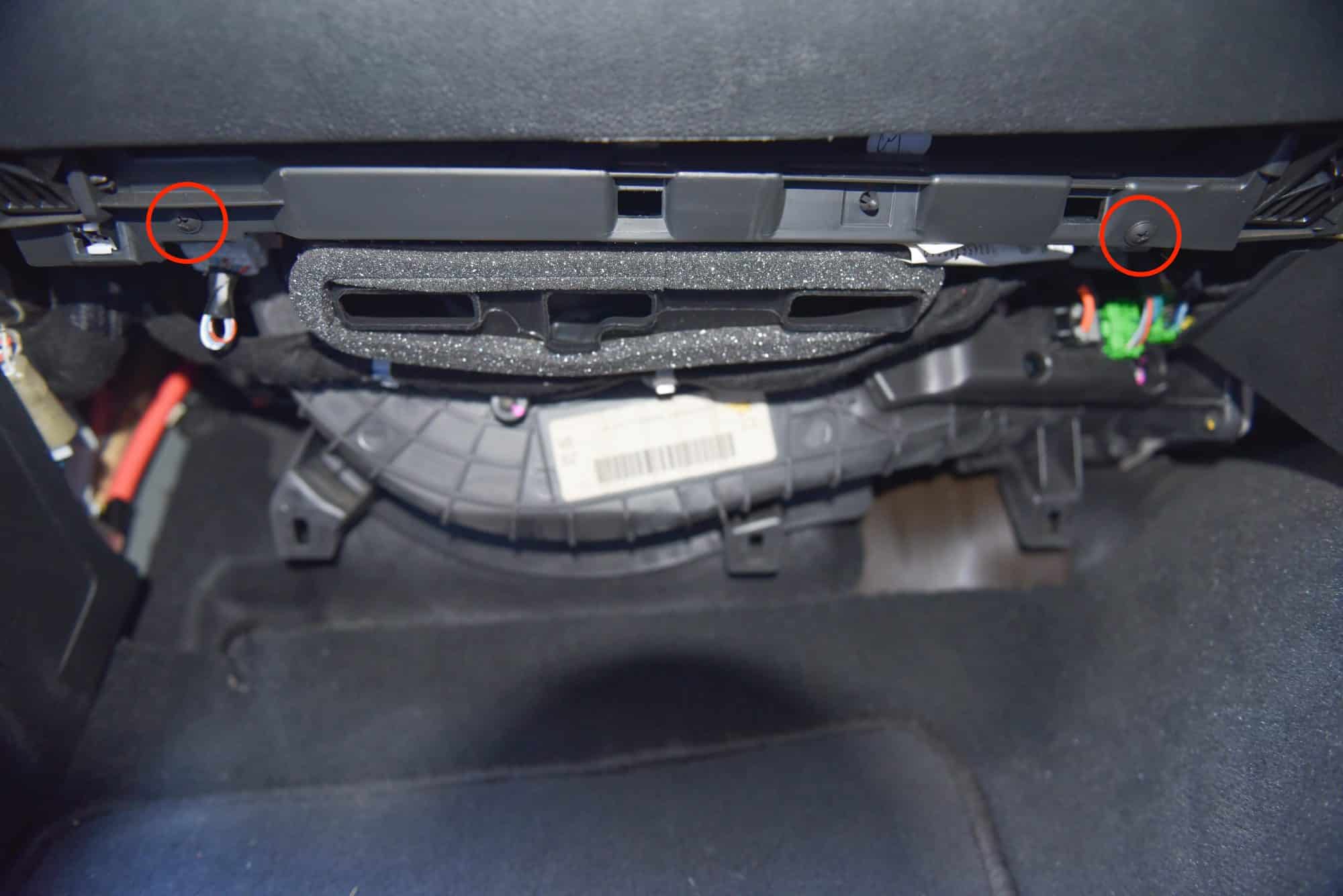
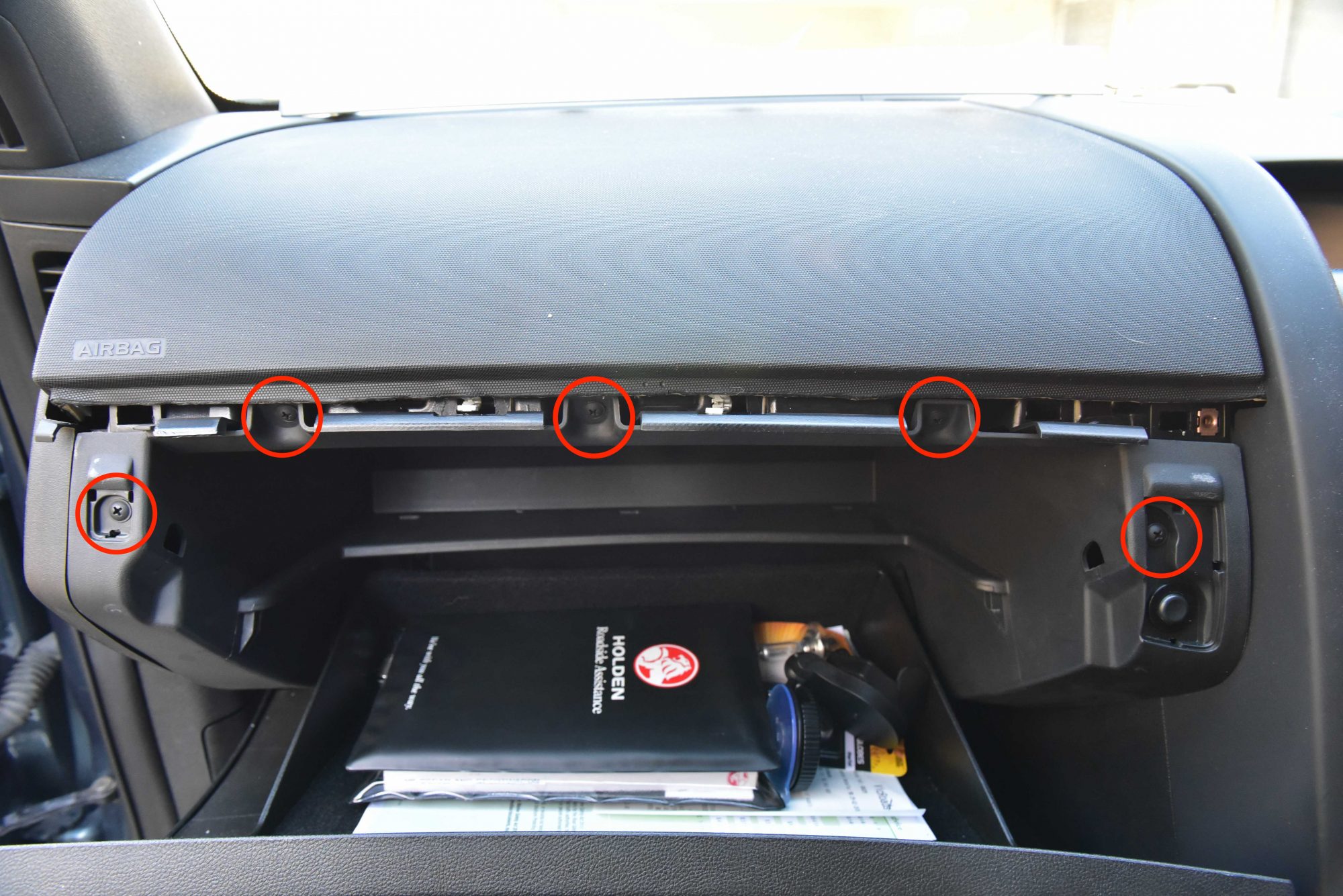
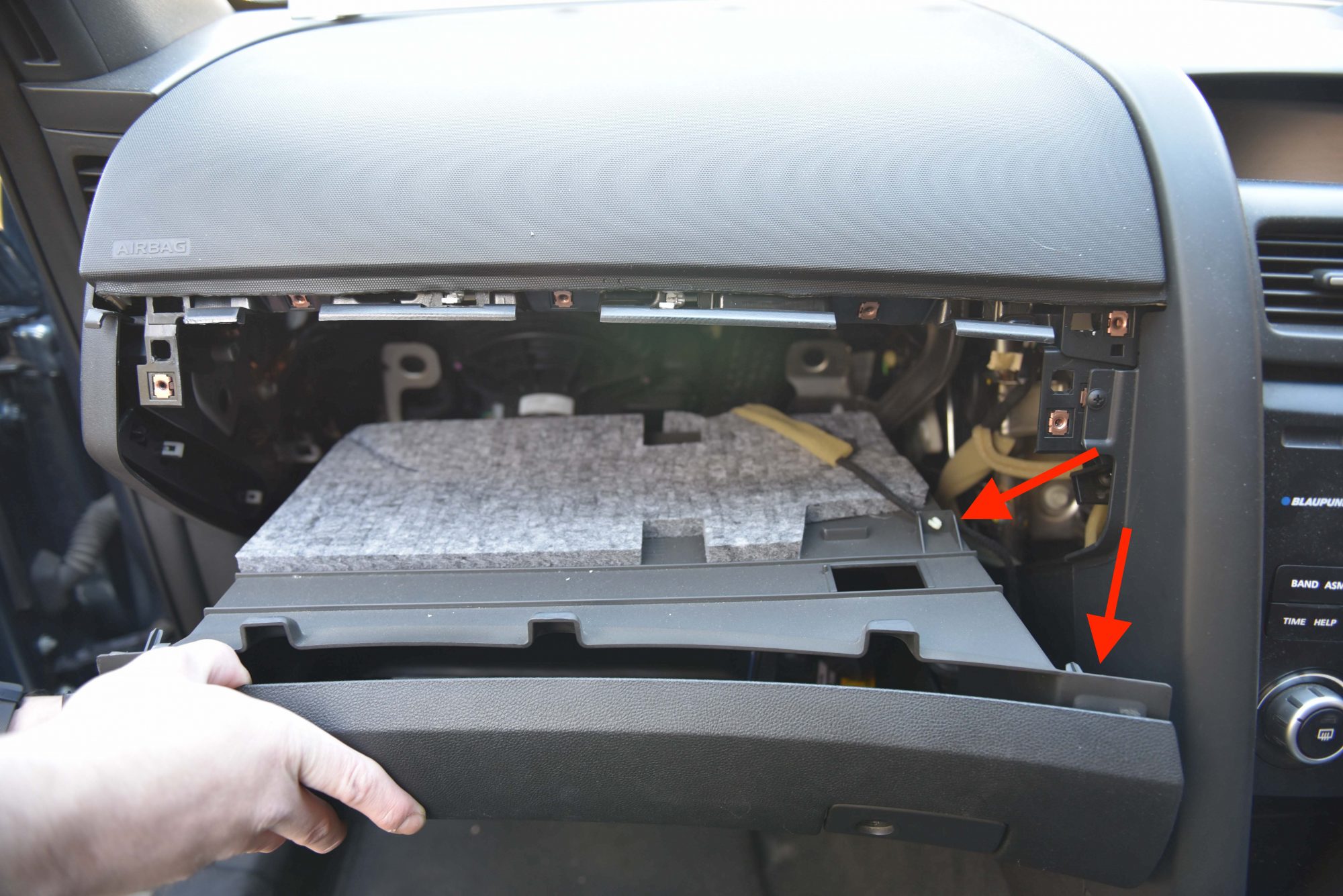
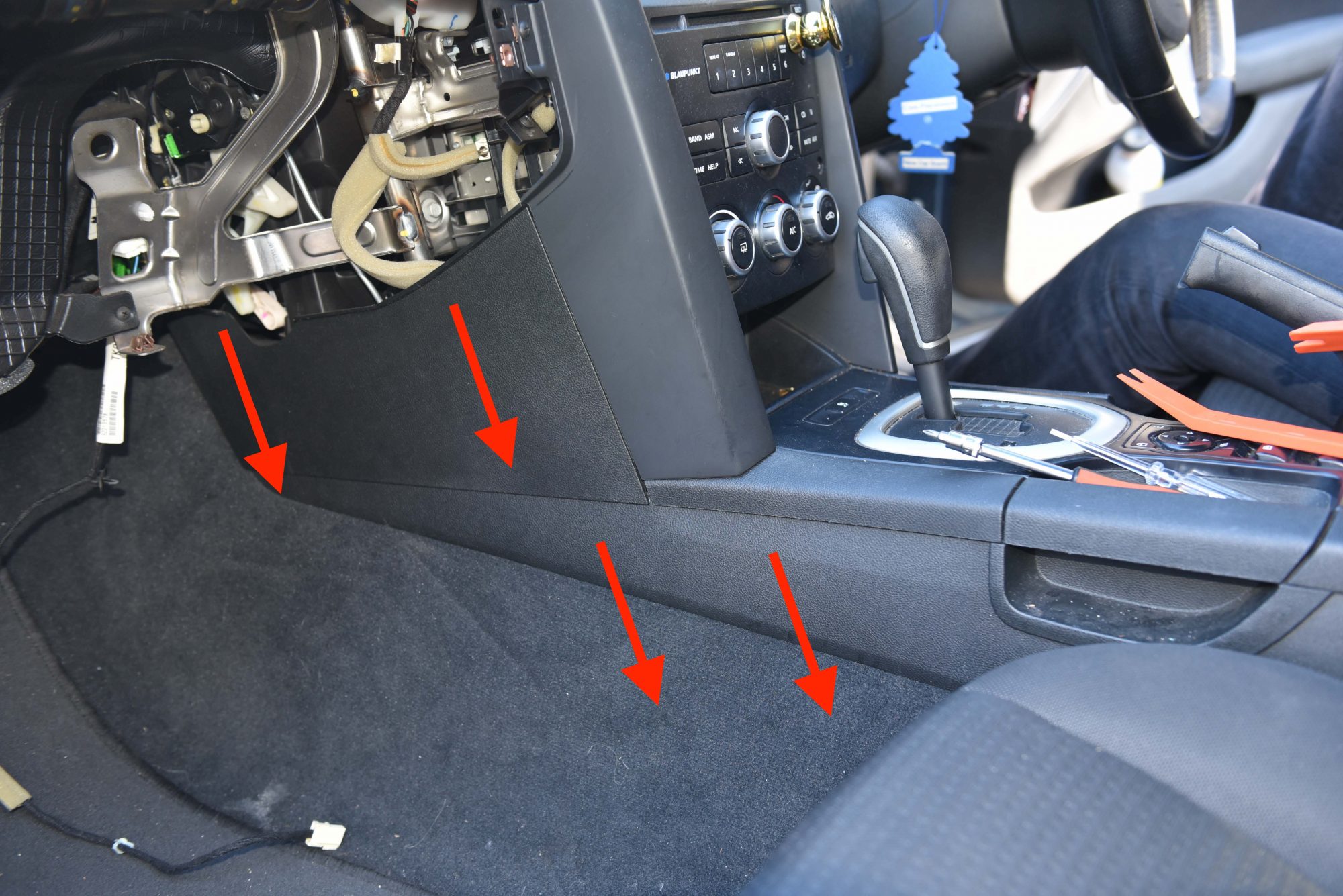
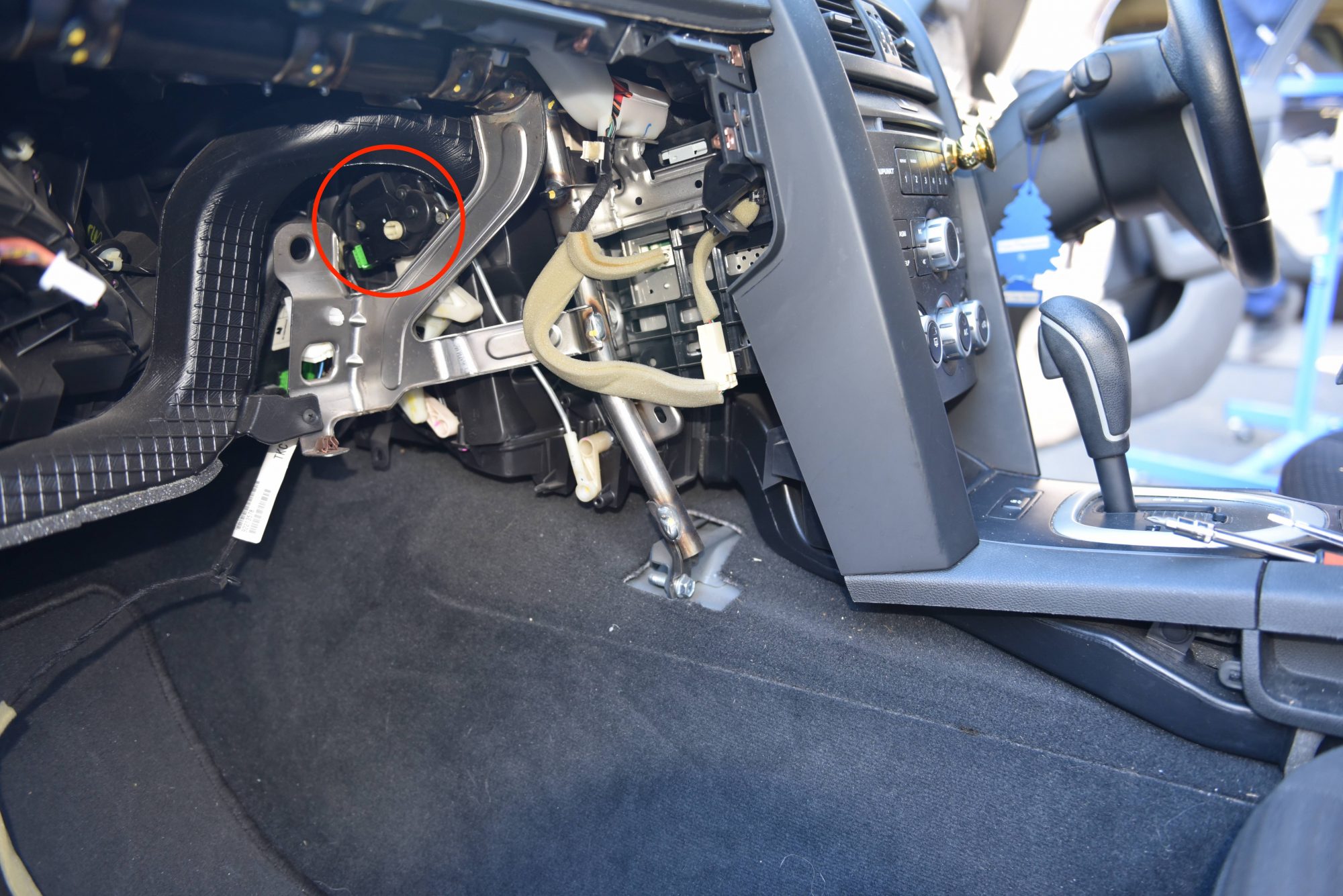
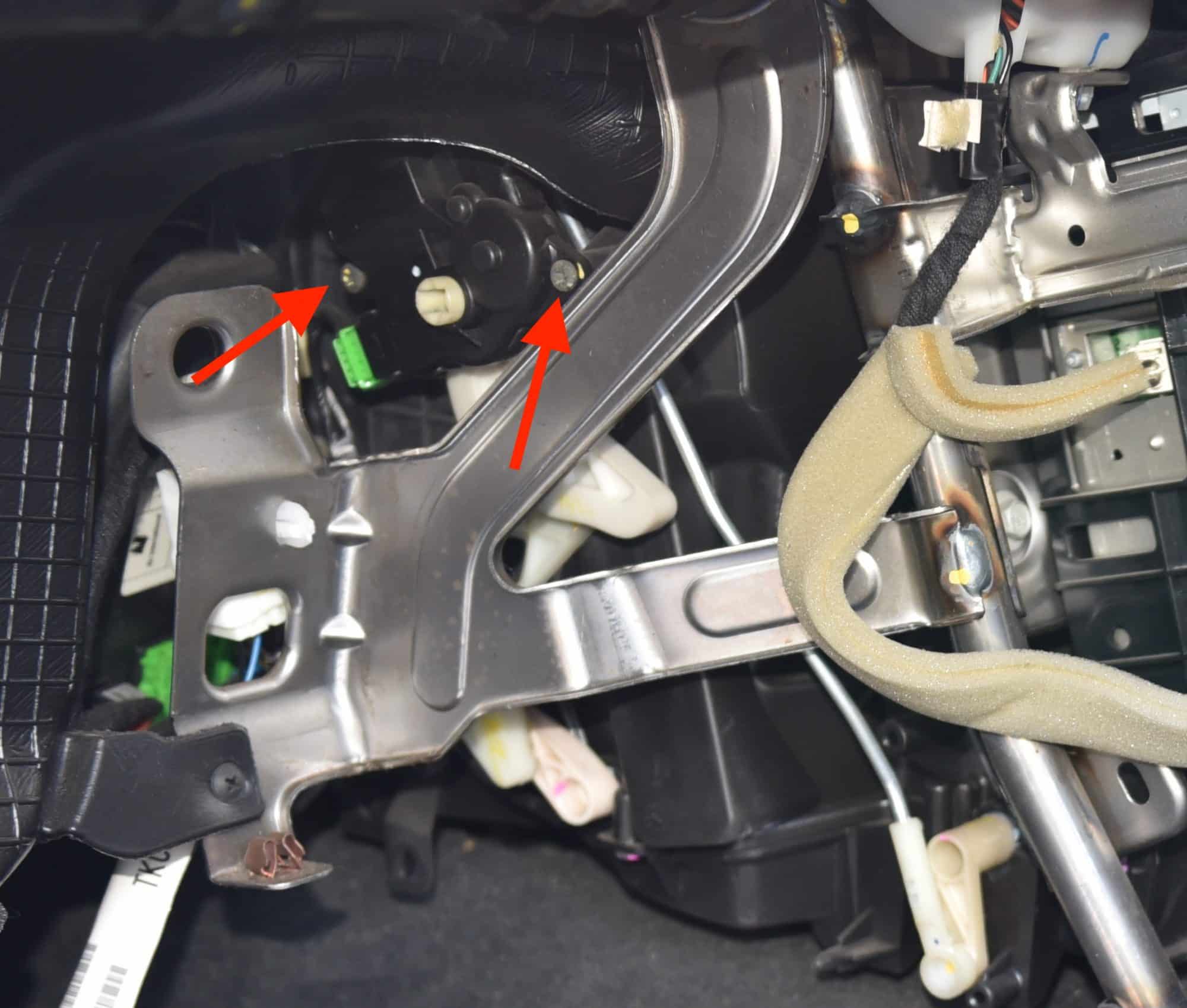
This Post Has 222 Comments
Yep worked a treat !! Not wrong about that top screw :/ but all good now 🙂 on closer inspection when I popped the old unit apart the small cog had broken inside
Nice work!
ve e3 r8, air con cold on drivers side, warm /cool air passenger side and back seat vent when system on cold, switch to heat and get the opposite, drivers hot obviously, passenger and rear vents are cold sort of, had system checked for leaks etc . all ok & gas ok.
thinking actuators are the issue,
would it be best to just replace all of them while dash is apart or do they not fail that often?
Car is a 2012 model but only 55k on it.
Hi Chris, It does sound like the actuators. Have you tried the re-learn test? Later model VEs like yours have a revised actuator that should not fail. It is probably a one-off rather than all of them.
Yes have tried the re learn process, no success, they do not click as such but you can hear the passenger side more than the drivers side in the learn mode.
Will let you know, have an air con tech having a look today. I don’t the patients to do myself.
Can confirm it was the passenger side actuator, obviously not fixed completely by holden fro series 2 ve.
Thanks for the update!
Great post, very clear instructions with accompanying photos, well done guys.
I have a 2006 ve ssv. Compressor is turning on when selecting air con although does not come through vents unless you are moving at speed. The fan is not blowing. I took the fan out and tested and it spun with an external 12v power source. Is it possible that a faulty actuator could be the culprit? I have tried the re learn test and actuators seem to be activating and no clicking sounds.
Cheers
Hi Craig, a faulty actuator is unlikely to cause the issue you described. I would suggest an issue with the HVAC Controller, and the 12V output which controls the fans.
Excellent instructions. There were a couple of screws missing in instructions cant remember which step though. I had 2012 series2 and replaced drivers side. I was having to continually do the relearn each time in the car which i got sick of doing. Found using a screw driver bit in a small socket wrench was way to get difficult screw out. Wouldnt have been able to get it out otherwise. Old actuator had vent in a different position which made alignment a bit tricky when fitting new actuator. All good now. Thanks.